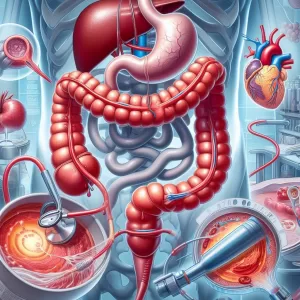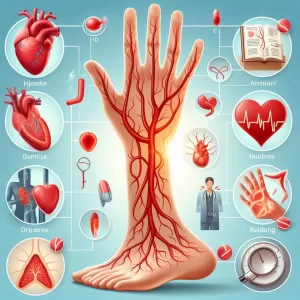What is Cystoscopy: Overview, Benefits, and Expected Results
Définition et aperçu
Cystoscopy is a minimally invasive test that determines the condition of the urethra and bladder. It uses a cystoscope, a flexible or rigid tube with a camera and light source, which goes through the urethra and into the bladder. The light illuminates the insides of the organs while the camera provides real-time images on the screen. The examination is performed by a urologist.
Both the bladder and the urethra are part of the urinary tract system. In human anatomy, the kidneys filter wastes and other by-products found in the bloodstream, removing them from the body through urine. Urine, on the other hand, passes through the ureter, a tube that is about 12 inches long. It is composed of thick walls that contract, making the urine move to the urinary bladder.
The bladder is a sac that is composed of muscles and valves. It is responsible for storing urine before it is expelled through the urethra and into the penis or vagina. It can store as much as 600mL of urine; when it becomes full, the muscles contract and the urine goes out of the valves.
These two body parts can experience medical problems such as blockages and inflammation that can be diagnosed properly by cystoscopy.
The test may be carried out with other procedures such as a biopsy, where the doctor obtains tissue samples to confirm or rule out malignancies.
Qui devrait subir et résultats attendus
Cystoscopy may be recommended for people who are showing signs and symptoms of a urinary tract problem. Ceux-ci inclus:
- Change in urination (frequent or infrequent urination)
- Pain during urination
- High levels of proteins or several crystals in the urine sample
- Hematuria (blood in the urine)
- Infection urinaire
- Frequent infection of the urinary tract
- Pain in the pelvic area
- Feeling of a full bladder even after urination
- Fièvre
- Perte de poids
These conditions may indicate a possible blockage in the ureter or the bladder due to a kidney stone, polyp, or tumour (mass), which can be malignant or benign. The pain, on the other hand, may be caused by inflammation brought by bacteria, irritation of the walls, or other diseases. It is also a test used to diagnose hyperplasia (enlargement) of the prostate and cancer de la prostate.
The procedure may also be carried out as a part of surgery. Additional sheaths may be inserted where microsurgical instruments can be used.
The test can take a few minutes to an hour. If a rigid cystoscope is used, general anaesthesia is administered. If it’s the flexible tube, only local anesthesia is needed, which means the patient can go home immediately after the exam. Either way, there may be a feeling of discomfort, which can be relieved by drinking water or taking a warm bath, depending on doctor’s orders.
Comment fonctionne la procédure
Unless the test requires general anesthesia, there’s no special preparation (such as fasting) needed. However, before the test commences, the bladder should be emptied.
A numbing agent is applied to the urethra a few minutes before the procedure to minimize discomfort and pain. The tube is then inserted into the urethra, which then goes through the ureter and into the bladder. The lens is used to magnify the bladder, so its condition can be carefully and properly assessed. If it has a video camera, the camera will deliver live images of the organs to the computer screen.
A saline solution is introduced into the bladder so it expands further, allowing the doctor to see it more clearly. If there is a need to obtain a tissue sample, the urologist shifts to using a much bigger scope.
After the exam, the bladder may be emptied to get rid of the saline solution. Patients who were administered with general anaesthesia should rest until the effects of the medicine wear off. Antibiotics may also be provided to prevent infection.
Often, patients are not allowed to engage in strenuous activities for a few days following the procedure.
Risques et complications possibles
Aside from minor discomfort and the urgent need to urinate as the saline solution is introduced into the bladder, there is rarely any risk or complication associated with the procedure.
However, slight bleeding may occur especially after a biopsie. There will also be a burning sensation and pain that can last a few days after the exam. Infection, swelling, or inflammation can also happen.
Les références:
- Duffey B, Monga M. Principles of endoscopy. In: Wein AJ, ed. Campbell-Walsh Urology. 10th ed. Philadelphia, PA: Saunders Elsevier; 2011:chap 8.
- Coburn M. Urologic surgery. In: Townsend CM Jr., Beauchamp RD, Evers BM, Mattox KL, eds. Sabiston Textbook of Surgery. 19th ed. Philadelphia, PA: Saunders Elsevier; 2012:chap 73.
/trp_language]
## What is Cystoscopy?
**Overview**
Cystoscopy is a medical procedure that allows a healthcare professional to examine the inside of your bladder and urethra. It is performed using a thin, flexible tube with a camera on the end called a cystoscope.
**Benefits**
Cystoscopy is used to diagnose and treat various conditions affecting the bladder and urethra, including:
* Urinary tract infections (UTIs)
* Urinary incontinence
* Bladder cancer
* Kidney stones
* Prostate enlargement
**Expected Results**
During cystoscopy, the healthcare professional can:
* Visualize the inside of the urethra and bladder
* Look for abnormalities, such as tumors or inflammation
* Take biopsies for further analysis
* Perform minor procedures, such as removing small bladder stones or dilating the urethra
**Procedure**
Cystoscopy is usually performed under local anesthesia to minimize discomfort. The cystoscope is inserted through the urethra into the bladder. The healthcare professional will then inject a saline solution into the bladder to expand it, making it easier to see.
The procedure typically takes around 30-60 minutes. After the examination, you may experience some mild discomfort or burning during urination, which should subside within a few days.
**Post-procedure Care**
After cystoscopy, it is important to follow your healthcare professional’s instructions. This may include:
* Drinking plenty of fluids to help flush out any irritants
* Avoiding strenuous activity
* Taking pain medication as needed
* Calling your healthcare professional if you experience any fever, chills, or persistent pain
**Conclusion**
Cystoscopy is a safe and effective procedure for evaluating and treating various conditions affecting the bladder and urethra. By allowing healthcare professionals to directly visualize the inside of these organs, cystoscopy provides invaluable information for diagnosis and management.
2 commentaires
Laisser un commentaire
Articles populaires








Interesting topic, could you please add more about the risks and complications of the procedure
This post provides an overview of Cystoscopy, including its benefits and expected results.